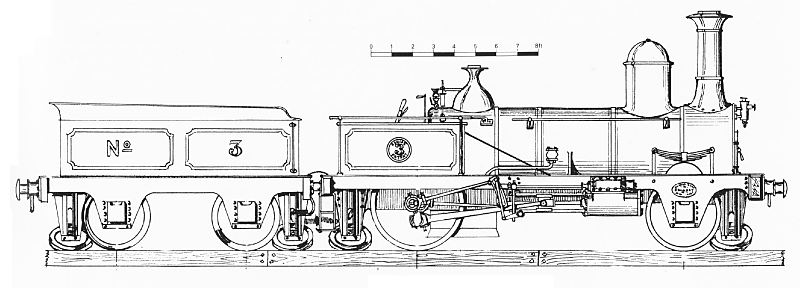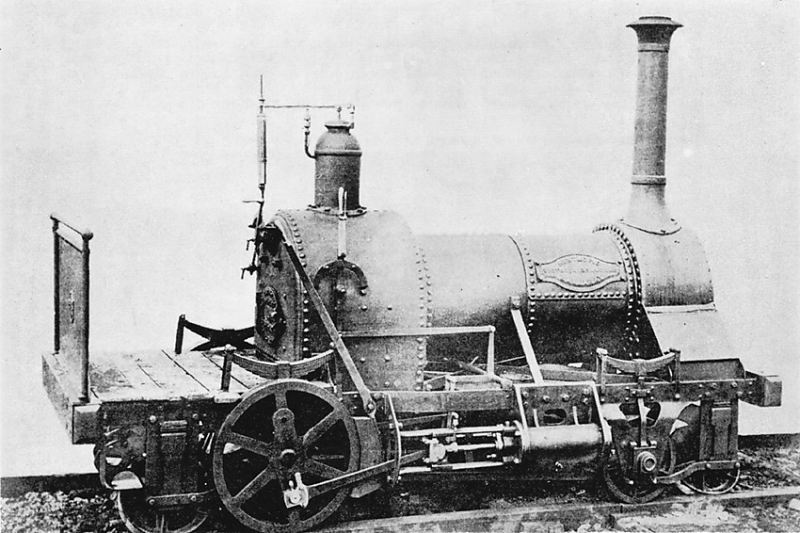Gallery opened: 13 Nov 2017
Updated 26 Nov 2017
Lady Barklay added




The Davies Guidewheel Locomotives |
Gallery opened: 13 Nov 2017 |
The Oreti railway was built on the south island of New Zealand in 1864. To cut construction costs the rail were simply baulks of wood, and the locomotives used a guidewheel system introduced by J R Davies of Australia. It was virtually identical to (and probably copied from) the Arnoux guidewheel locomotives, which went into service much earlier in 1846.
The history of the railway is very well covered by this website and I will concentrate here solely on the technology.
 | Left: The Davies guidewheel locomotive: 1864
|
Only two locomotives were built, confusingly called No 2 and No 3; possibly this was because an earlier and much smaller engine called the Lady Barklay was used during construction. No 2 was the only one of the pair to go into service. Apparently she could reach 20 mph, but damaged the wooden track when she did so. The real problem, however, was that the adhesion was wholly inadequate and when it was reduced by rain, snow, or mud she could not move even on level track.
 | Left: The Lady Barklay
|
The Oreti Railway quickly went bankrupt, in 1867, followed soon after by the provincial government itself. The two locomotives were sent to do useful jobs of work at two different sawmills, one surviving until 1917.

  
|